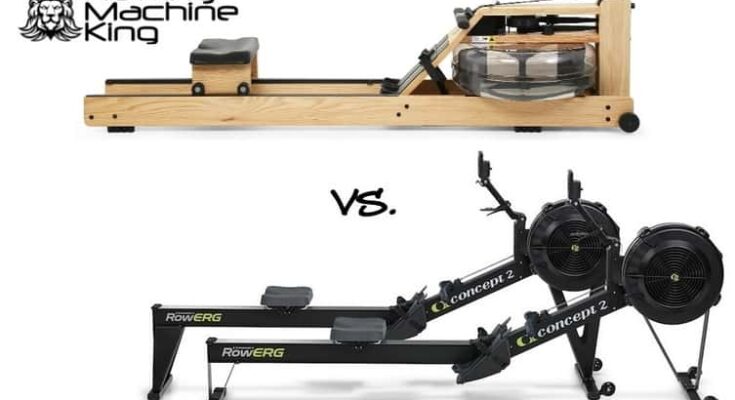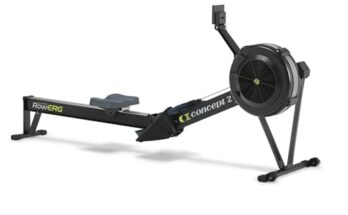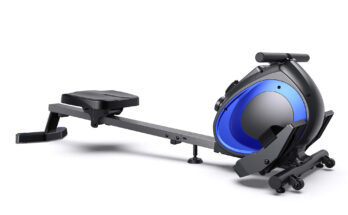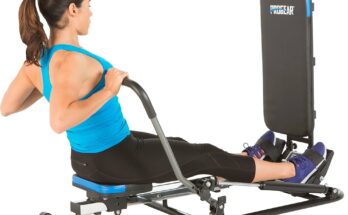Are you trying to figure out which type of rowing machine is right for you? With so many options available, it’s easy to feel overwhelmed.
But don’t worry—you’re in the right place. We’ll dive into the world of water rowers and air rowers, helping you discover which one suits your fitness needs and lifestyle best. Imagine yourself gliding smoothly on a rowing machine, feeling every muscle working in harmony, all while mimicking the rhythm of rowing on water or the resistance of air.
Which sensation would you prefer? Both water rowers and air rowers offer unique experiences, but they cater to different preferences and fitness goals. As you read on, you’ll uncover the benefits and drawbacks of each type, allowing you to make an informed decision. Whether you’re aiming for a more realistic rowing experience or seeking customizable resistance, understanding the nuances of these machines will empower you to choose the perfect fit for your workout regimen. Stay with us, because by the end of this article, you’ll know exactly which rowing machine will help you achieve your fitness ambitions.
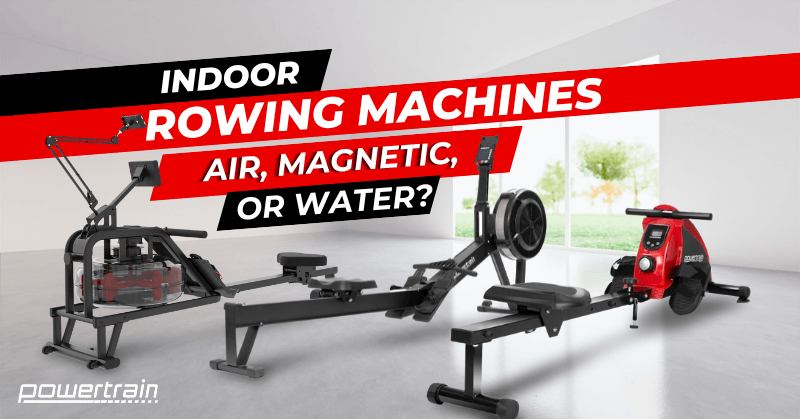
Water Rower Features
Water rowers mimic the natural rowing feel with smooth resistance. Quiet operation enhances home workouts. In contrast, air rowers adjust resistance with stroke speed, offering dynamic workouts. Both types cater to different exercise needs, making them popular choices for fitness enthusiasts.
When you’re diving into the world of rowing machines, the choice between a water rower and an air rower can be quite puzzling. Both offer unique experiences, yet the water rower stands out with its distinct features. This section will shed light on the key aspects of water rowers, helping you make an informed decision.
Resistance Mechanism
Water rowers use a water-filled tank to create resistance. As you pull the handle, the paddles inside the tank spin and push against the water, simulating real-life rowing. This feature offers a smooth and consistent resistance that adapts to your pace. The harder you row, the more resistance you feel, making it perfect for both beginners and seasoned rowers alike.
Sound And Feel
There’s something incredibly soothing about the sound of water moving with each stroke. Imagine the gentle swish mimicking the serene flow of a river. This natural sound can transform your workout into a more immersive experience, making you feel closer to nature. Many users find this sound calming, helping them to relax and focus during their exercise.
Maintenance Requirements
Maintaining a water rower is straightforward, but it does require some attention. You need to occasionally add purification tablets to the water tank to prevent algae and bacteria growth. Ensure the water level in the tank is checked regularly to maintain optimal resistance. Also, occasionally inspect the rower’s other parts, like the seat and handle, to keep everything in top condition. Water rowers offer a unique, immersive rowing experience. As you weigh your options, think about the type of workout environment you want to create. Can the calming sound of water enhance your workout routine?
Air Rower Characteristics
Air rowers are popular among fitness enthusiasts for their unique features. They offer a dynamic workout experience. These machines use fan blades to create resistance. This makes each rowing stroke feel natural and fluid.
Understanding the characteristics of air rowers can help you make an informed choice. Here, we explore some key features of air rowers.
Resistance Variation
Air rowers provide a unique resistance system. The faster you row, the greater the resistance. This makes them ideal for people of all fitness levels. You can easily adjust your workout intensity by changing your rowing speed. It offers a customized workout without manual adjustments.
Noise Level
Air rowers are known for their distinct noise. The fan blades produce a whooshing sound while rowing. Some users find this sound motivating. Others may prefer a quieter machine. Consider your environment and preferences before choosing an air rower.
Durability And Upkeep
Air rowers are often built with sturdy materials. This makes them durable and long-lasting. Regular maintenance ensures they remain in good condition. Keep the fan blades clean for optimal performance. Check for any loose parts periodically. With proper care, an air rower can last for years.
Workout Efficiency
When it comes to choosing between a water rower and an air rower, understanding workout efficiency is crucial. Each type of rowing machine offers unique benefits that can enhance your fitness journey. Let’s dive into the specifics, from intensity levels to calorie burn and muscle engagement, so you can make an informed decision.
Intensity Levels
Water rowers provide a smooth and consistent resistance. The harder you pull, the more resistance you feel. This natural resistance mimics the sensation of rowing through water. It offers a gentle start but can ramp up quickly, making it suitable for all fitness levels.
In contrast, air rowers rely on wind resistance. The faster you row, the more resistance you generate. If you crave intense workouts, air rowers can deliver a challenging experience right from the start. They’re often favored in competitive settings for their ability to push your limits.
Calorie Burn Potential
Both machines are excellent for burning calories, but how do they stack up against each other? Water rowers might feel more forgiving, but don’t be fooled—they can still torch calories effectively. The fluid movement encourages longer sessions, enhancing your calorie burn.
Air rowers, with their intense resistance, can elevate your heart rate rapidly. Short bursts of high-intensity rowing can lead to significant calorie expenditure. If you’re aiming for quick and efficient calorie burning, air rowers might be your go-to.
Muscle Engagement
Do you want to focus on specific muscle groups? Water rowers offer a full-body workout, engaging major muscles like the legs, core, and back. The fluid movement promotes balanced muscle engagement, ideal for those seeking overall toning.
Air rowers also deliver full-body workouts but with a slightly different emphasis. The intense resistance can target your upper body more. If you’re keen on building upper body strength, an air rower might offer the edge you need.
So, which rower aligns with your fitness goals? The water rower’s smooth resistance or the air rower’s challenging intensity? Your choice can shape your workout efficiency and overall fitness journey. Consider your goals, try both if possible, and see what feels right for you. Are you ready to row your way to fitness success?
User Experience
Choosing between a water rower and an air rower depends on personal preference and experience. Water rowers offer a smooth and quiet experience, simulating actual rowing. Air rowers provide an intense workout with adjustable resistance, ideal for those seeking a challenging exercise.
When choosing between a water rower and an air rower, your user experience is a pivotal factor. This decision influences not just your workout efficiency but also your overall satisfaction and motivation. Let’s dive into the various elements that shape your experience with these rowing machines.
Comfort And Ergonomics
Comfort is crucial when you’re rowing for extended periods. Water rowers often offer a smoother, quieter rowing action, thanks to the gentle swish of water. This can create a serene environment, helping you focus and maintain a steady rhythm. On the other hand, air rowers deliver a more dynamic response. The resistance increases with your rowing intensity, offering a realistic rowing feel. While some find this motivating, others might feel it lacks the fluidity of water rowers. The design of the seat and handle can also affect your comfort. Try both machines if possible, to see which design feels more natural to your body.
Space Considerations
Space can be a significant concern, especially if you’re setting up a home gym. Water rowers typically have a more compact footprint and can be stored upright. This makes them a great choice for smaller spaces. Air rowers usually require more room due to their longer rail and fan assembly. However, they often come with foldable designs. Check the dimensions and ensure you have the space to accommodate them comfortably. Think about your available space and how much you’re willing to dedicate to a rowing machine.
Portability
Portability is another factor that might affect your choice. Water rowers, with their water tanks, can be heavier and harder to move around. If you plan on repositioning your rower frequently, consider this aspect. Air rowers are generally lighter and often equipped with wheels for easier movement. However, don’t forget that moving any rower frequently can cause wear and tear. Consider how often you’ll need to relocate your machine and choose accordingly. How important is portability in your day-to-day routine?
Cost Comparison
Choosing the right rowing machine can be challenging. Cost plays a huge role in this decision. Understanding the price differences helps buyers make informed choices. Let’s break down the cost of water rowers and air rowers.
Price Range
Water rowers often come with a higher price tag. They typically range between $800 and $2,500. This is because of their unique water resistance system. Air rowers are generally more affordable. Prices start at around $300 and can go up to $1,500. Air rowers use simple air resistance, making them cost-effective.
Long-term Investment
Both rowers offer long-term value. Water rowers have durable construction, lasting many years. This can justify the higher initial cost for some buyers. Air rowers are also durable but may need more maintenance. Replacement parts for air rowers can be cheaper. This can lower the total cost over time.
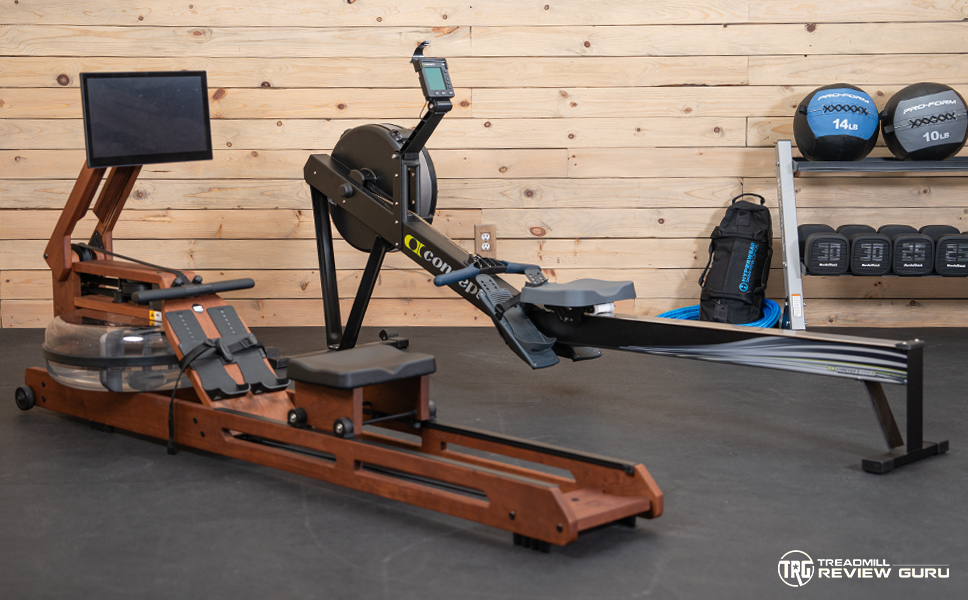
Target Audience
Choosing between a water rower and an air rower depends on your fitness goals and personal preferences. Water rowers offer smooth resistance, mimicking real rowing. Air rowers provide adjustable resistance, intensifying with faster rowing.
When choosing between a water rower and an air rower, understanding the target audience can help you make an informed decision. Both types of rowing machines offer unique benefits, but the ideal choice can vary depending on your fitness level and objectives. Whether you’re a beginner just starting your fitness journey or an advanced user looking to enhance your performance, knowing which machine suits you best is crucial.
Beginner Suitability
If you’re new to rowing, you might wonder which machine will give you the best start. Water rowers are often praised for their smooth and consistent resistance, which can be less intimidating for beginners. The soothing sound of water can also make workouts feel more natural and less mechanical. Air rowers, on the other hand, provide variable resistance based on your rowing speed. This can be challenging for beginners who are still mastering their form. However, if you enjoy the idea of progressing quickly and want a bit of a challenge right away, an air rower might be the right fit. Think about what motivates you. Is it the peacefulness of a water rower’s sound, or the dynamic feedback of an air rower? Your choice should inspire you to get on the machine regularly.
Advanced Users
For those with more experience, both water and air rowers have their advantages. Advanced users often appreciate the precision and control that an air rower provides. The faster you row, the more resistance you feel, allowing for intense, high-power workouts. Water rowers can still challenge advanced users, especially those who value endurance and consistency. The natural resistance of water offers a workout that can focus on technique and stamina. Many athletes prefer the realistic rowing feel that water rowers provide. Consider what you’re aiming to achieve in your workouts. Are you looking for explosive power or sustained endurance? Your goals can guide your choice between these two machines. Choosing between a water rower and an air rower depends on where you are in your fitness journey and where you want to go. Have you tried both? Which one felt like the right fit for you? Your experience can be the best guide in making the right decision.
Choosing The Right Rower
Deciding between a water rower and an air rower can be tricky. Each type offers unique benefits and challenges. Understanding your needs can help in making a choice. Consider your personal goals and fitness level. These factors can guide you to the right decision.
Personal Goals
Think about what you want to achieve with rowing. Are you aiming for weight loss or strength building? Water rowers offer a smooth and calming experience. They mimic the feel of rowing on actual water. This can be ideal for those seeking a meditative workout. Air rowers, on the other hand, provide a more intense workout. They are great for those aiming to boost endurance and speed. Align your choice with your personal fitness objectives.
Fitness Levels
Your current fitness level also plays a role in choosing a rower. Beginners may prefer the gentle resistance of a water rower. It allows for a gradual increase in workout intensity. This helps in building endurance over time. Advanced users might enjoy the challenge of an air rower. The resistance increases with rowing speed, offering a tough workout. Select the rower that matches your fitness level and progression goals.

Frequently Asked Questions
What Are The Key Differences Between Water And Air Rowers?
Water rowers use water resistance, offering a smooth and quiet workout. Air rowers utilize air resistance, creating a dynamic and more intense exercise. Water rowers simulate the feel of rowing on water, while air rowers adjust resistance based on rowing speed.
Both provide effective full-body workouts.
Which Rower Is Better For Beginners?
Water rowers are often preferred by beginners due to their smooth and consistent resistance. They offer a more realistic rowing experience, helping users develop proper technique. Air rowers can be more challenging initially, but they allow for customizable resistance levels as users become more skilled.
How Does Maintenance Differ For Each Rower Type?
Water rowers require occasional water tank cleaning and water level adjustments. Air rowers need regular dusting and checking of the chain or belt tension. Both types require routine inspection to ensure optimal performance and longevity. Proper maintenance ensures consistent, reliable workouts and prevents potential issues.
Are Water Rowers Quieter Than Air Rowers?
Yes, water rowers are generally quieter compared to air rowers. The water resistance creates a gentle swooshing sound, resembling natural rowing. Air rowers tend to produce a louder whooshing noise from the fan. Noise levels can vary depending on the brand and model of the rower.
Conclusion
Choosing between a water rower and an air rower depends on your needs. Water rowers offer a smooth, natural rowing experience. They mimic rowing on water. Air rowers provide dynamic resistance. Perfect for intense workouts. Consider space, budget, and preference.
Both types offer great fitness benefits. Water rowers are quieter. Air rowers can be louder. Evaluate your goals and try them if possible. Your choice will enhance your workout routine. Enjoy the journey towards better health and fitness. Happy rowing!
